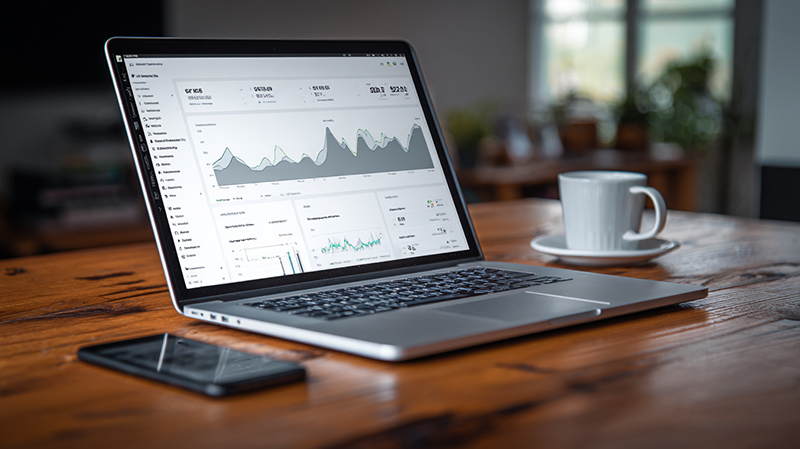By Katrin Krakovich, CEO & SEO Expert at Lahav Media
Here's the brutal truth about restaurant marketing: 80% of new restaurants fail within five years, and most of them had great food. The difference between thriving and closing isn't your ribeye or your latte art. It's whether people actually know you exist.
I've watched too many talented chefs and café owners pour their life savings into perfect interiors and Instagram-worthy dishes, only to sit empty because they treated marketing like an afterthought. Don't be that restaurant.
Why Most New Restaurant Launches Fall Flat
Most restaurant owners approach their launch like Field of Dreams: "If you build it, they will come." Spoiler alert: they won't. Your neighborhood already has 15 other restaurants competing for the same customers' attention and wallets.
The restaurants that succeed from day one understand that marketing isn't something you do after you open. It's something you start 3-4 months before you flip the "Open" sign.
Phase 1: Pre-Launch Marketing (3-4 Months Before Opening)
Claim Your Digital Real Estate First
Before you even hire your first server, you need to own your corner of the internet. This means setting up your Google Business Profile, securing your social media handles, and building a simple website.
I can't tell you how many restaurant owners I've worked with who discovered someone else already claimed @TheirRestaurantName on Instagram. Don't let that be you.
Create your Google Business Profile with your correct address, hours (mark as "coming soon"), and add photos of your construction progress. Yes, even boring renovation photos help build anticipation and show you're legitimate.
Build Pre-Opening Buzz That Actually Works
Forget the generic "coming soon" posts. People scroll past those faster than they skip YouTube ads. Instead, tell the story behind your restaurant. Share why you're opening, what makes your concept different, and give people reasons to care.
Document your journey: the late nights perfecting your signature sauce, finding the perfect espresso blend for your coffee shop, or the inspiration behind your cocktail menu if you're opening a bar. People don't just want to eat at restaurants anymore, they want to support stories they believe in.
Partner with Local Influencers Early
Start reaching out to local TikTok creators and Instagram influencers 2-3 months before you open. I've seen cafés in my area go from zero to hour-long lines outside just because the right TikToker posted about their matcha latte or aesthetic interior.
The magic happens when influencers document your pre-opening journey, then return after you launch. Their followers feel like insiders who discovered something special before everyone else. Find creators who genuinely align with your vibe, offer them exclusive tastings during your soft opening, and let them create authentic content about the experience.
I know places that literally don't take reservations anymore because TikTok made them so popular that people wait in line just to get in. That's the power of social proof done right.
Start Your Email List Before You Have Customers
This is where most new restaurants mess up. They wait until opening day to think about capturing customer information. By then, you've lost months of potential list-building.
Set up a simple email capture on your website offering something valuable: "Be the first to know our opening date and get a free appetizer on your first visit." You'd be shocked how many people will sign up for early access to a restaurant they're excited about.

Phase 2: The Critical First 30 Days
Dominate Local Search from Day One
The moment you open, you're competing with every other restaurant in your area for local search visibility. If someone searches "best Italian restaurant near me" or "coffee shop downtown," you want to show up.
This isn't just about SEO anymore. With ChatGPT and Google's AI search features becoming more prominent, you need to optimize for how people actually search now. They're asking AI assistants questions like "Where should I take my parents for dinner in [your city]?" or "What's a good café for working remotely?"
Make sure your website answers these natural language questions. Don't just list your menu items, explain what makes your restaurant perfect for date nights, family dinners, or remote work sessions.
Launch Week Strategy That Builds Momentum
Your opening week sets the tone for everything that follows. Instead of just opening your doors and hoping for the best, create a launch sequence that builds excitement day by day.
Day 1: Soft opening for friends, family, and VIP email subscribers only Days 2-3: Invite local food bloggers and influencers (yes, even micro-influencers with 1,000 followers matter) Days 4-5: Grand opening with special offers for the general public Week 2: Follow up with everyone who visited during launch week
The goal isn't just to fill seats during opening week. It's to create enough initial momentum that word-of-mouth carries you forward.
Get Your First Reviews Without Begging
Here's something most marketing agencies won't tell you: asking customers to leave reviews makes you look desperate. Instead, make the experience so memorable that people want to share it.
Train your staff to have genuine conversations with customers. When someone mentions they love the atmosphere or raves about a dish, that's your cue to mention you're new and would appreciate any feedback online.
Here's a pro tip that works incredibly well: if someone is clearly enjoying their meal and seems engaged, offer a complimentary dessert or coffee in exchange for an honest review while they're still at your table. "We're so glad you're enjoying everything! Since we're new, would you mind leaving us a quick review on Google? We'd love to bring you a slice of our signature chocolate cake on the house."
The key is timing. Ask for reviews when customers are already excited and still have 15 minutes left in their dining experience, not when they're trying to leave with their crying toddler.

Phase 3: Building Consistent Traffic (Months 2-6)
Master the Google Maps Game
Most restaurant owners obsess over their website's Google ranking and completely ignore Google Maps optimization. Big mistake. When someone searches "restaurants near me," they're not looking at your website first, they're looking at Maps.
Your Google Business Profile needs constant attention: fresh photos, regular posts about daily specials, prompt responses to questions, and yes, collecting those reviews we talked about earlier.
But here's what separates successful restaurants from struggling ones: consistency. Post something new every few days, even if it's just a photo of your Monday special or your barista's latest latte art.
Social Media Strategy That Actually Drives Sales
Instagram and TikTok can be powerful tools for restaurants, but they can also be time-sucking black holes that don't translate to actual customers walking through your door.
Focus on content that showcases your food, tells your story, and gives people reasons to visit today, not just double-tap and scroll. Behind-the-scenes content performs incredibly well: your chef preparing signature dishes, your team's morning prep routine, or the story behind your café's playlist selection.
The goal isn't to go viral (though that's nice when it happens). The goal is to stay top-of-mind with people in your area who are deciding where to eat tonight.
Paid Advertising That Actually Works
Google Ads and Meta Ads can drive significant traffic to new restaurants, but only if you know what you're doing. Most restaurant owners waste money on broad keywords like "restaurant" instead of targeting high-intent searches like "pizza delivery [your city]" or "romantic dinner [your neighborhood]."
Start small and local. Target people within a 5-mile radius who are actively searching for what you offer. A well-run Google Ads campaign for a new restaurant should be driving customers at $15-25 per conversion, not $100+.

Common Launch Mistakes That Kill Momentum
Trying to Be Everything to Everyone
Your new restaurant doesn't need to appeal to every person in your city. It needs to be absolutely perfect for your ideal customer. A cozy wine bar trying to also attract families with kids will end up satisfying no one.
Define who you're for, then market specifically to them. Your coffee shop might be perfect for remote workers, morning commuters, or weekend brunch crowds, but probably not all three equally well.
Ignoring Your Competition
Your customers aren't just choosing whether to eat at your restaurant. They're choosing between you and the dozen other options within walking distance.
Visit your competition regularly. What are they doing well? Where are they falling short? How can you position yourself as the better option for specific situations?
This isn't about copying, it's about differentiation. If every other café in your area focuses on speed and convenience, maybe you become the place people go to slow down and relax.
Inconsistent Messaging Across Platforms
Your Google Business Profile says you're "fine dining," your Instagram suggests "casual family restaurant," and your website talks about being "the neighborhood hangout." Confused customers don't become loyal customers.
Pick your positioning and stick with it everywhere. If you're the cozy neighborhood bistro, let that personality shine through in every photo, caption, and customer interaction.
Measuring What Actually Matters
Track the Right Metrics
Vanity metrics like Instagram followers and website visitors might make you feel good, but they don't pay your rent. Focus on metrics that directly correlate with revenue:
- New customers per week
- Customer lifetime value
- Cost per acquisition through different channels
- Review sentiment and response rate
- Local search ranking for your key terms
Use Technology to Your Advantage
Modern restaurant marketing isn't just about posting pretty food photos anymore. AI-powered search is changing how people discover new restaurants, and voice search is growing rapidly.
Make sure your restaurant shows up when people ask Siri "What's a good Thai restaurant nearby?" or when ChatGPT recommends dinner options. This means optimizing for conversational, natural language queries, not just traditional keywords.

-p-500.jpg)
